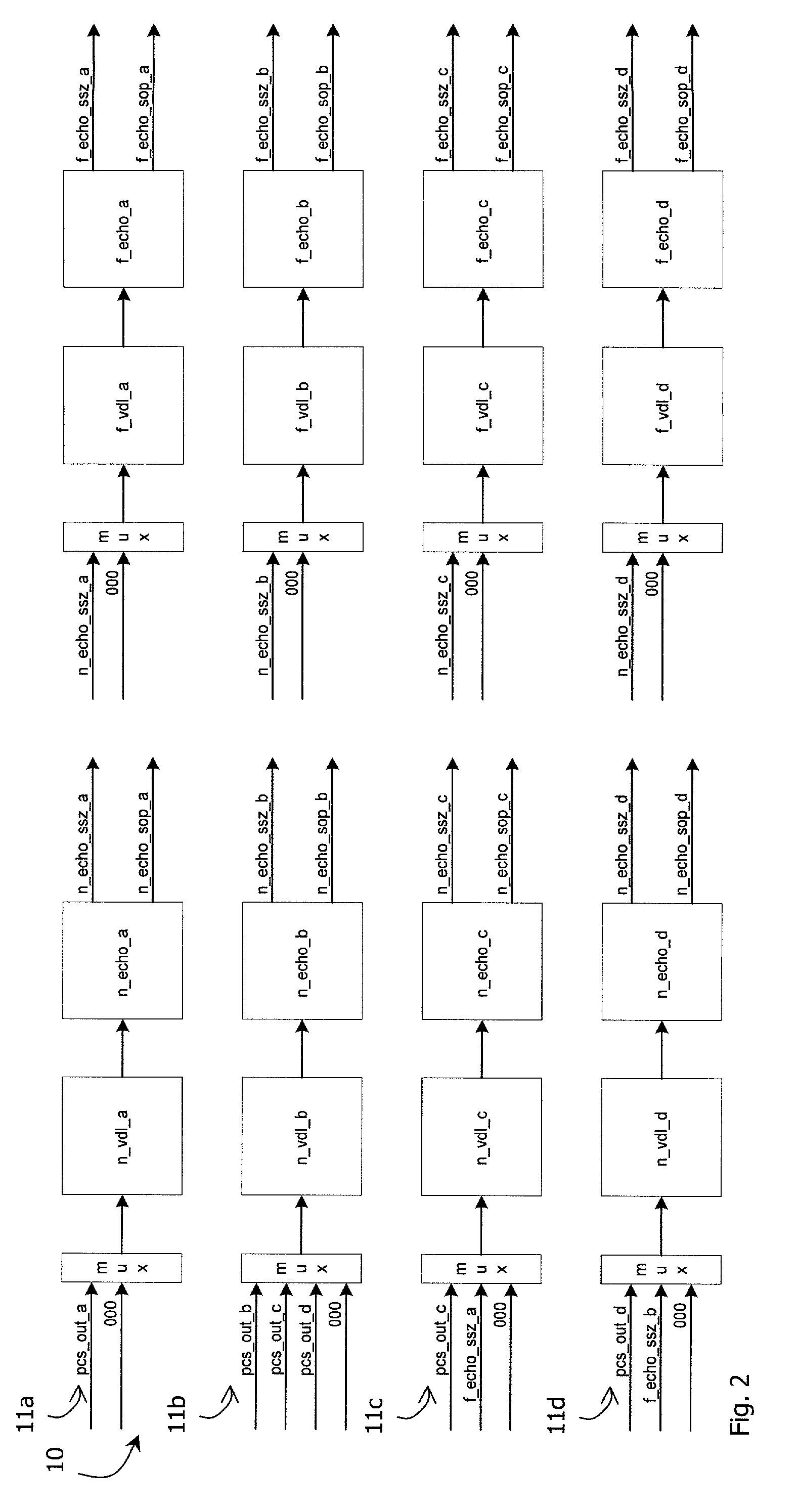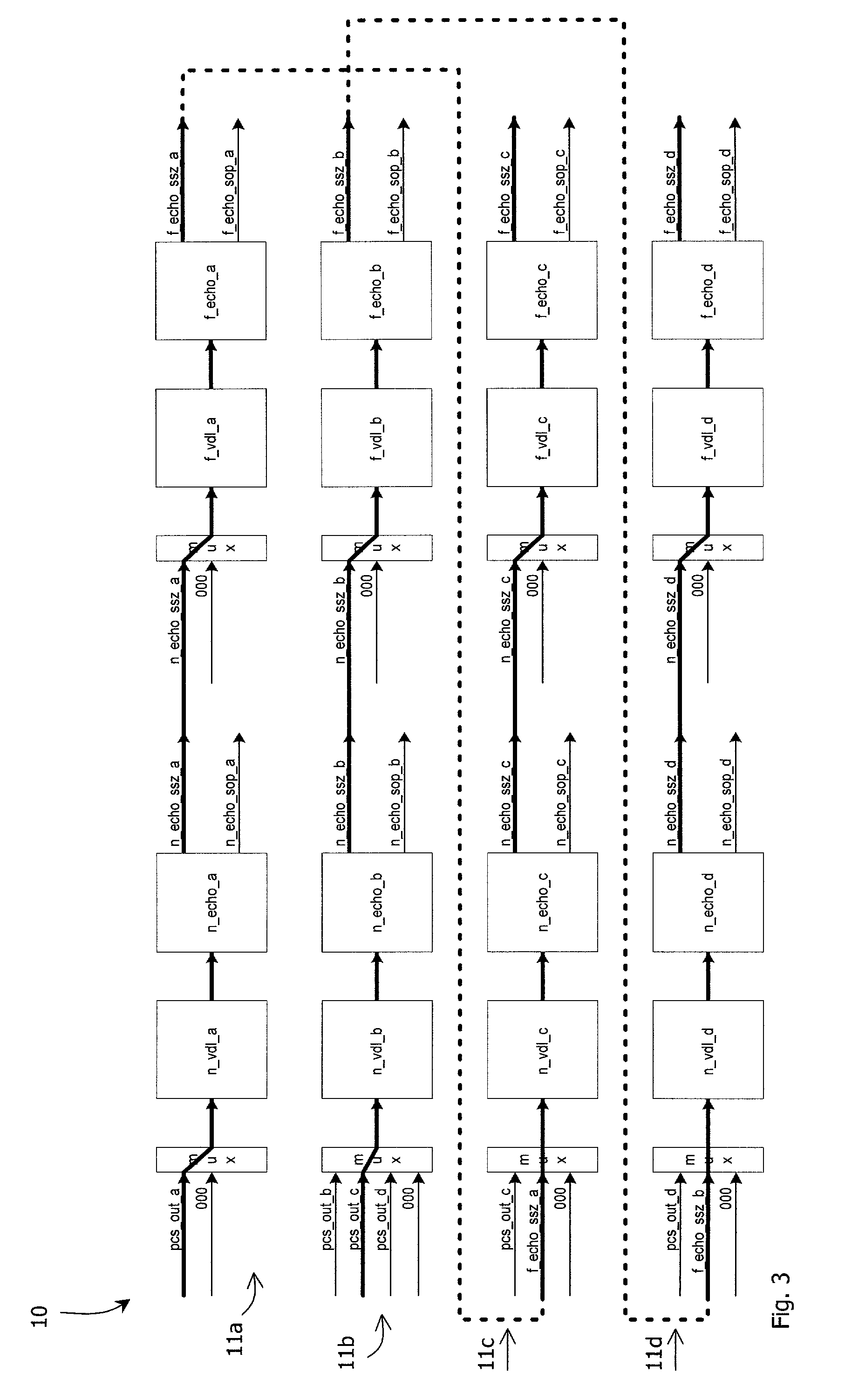Echo and crosstalk cancellation
a crosstalk and echo technology, applied in the field of cancellation of echo and crosstalk, can solve the problems of large and complex system, inconvenient operation, and inability to meet, and achieve the effect of reducing the complexity of the system
- Summary
- Abstract
- Description
- Claims
- Application Information
AI Technical Summary
Benefits of technology
Problems solved by technology
Method used
Image
Examples
Embodiment Construction
[0038] Referring to FIG. 1 a Gigabit system 1 comprises four cable pair channels A, B, C, and D and a transceiver 2 at each end. Each transceiver 2, at a high level, comprises a transmitter T, a receiver R, and a hybrid 3 physically connected to each cable A, B, C, and D. The echo and crosstalk sources for the left side transceiver 2 for cable pair A are illustrated by arrows. There are three FEXT interferances FEXT_BA, FEXT_CA, and FEXT_DA, three NEXT interferances NEXT_BA, NEXT_CA, and NEXT_DA, and finally, there is an echo in the receiver R from the associated transmitter T and from points of impedance mis-match along the cable.
[0039] The invention provides an echo and NEXT cancellation system for each transceiver 2. Each cancellation system comprises an echo canceller for dealing with echo in all of the four cable pairs, and a NEXT canceller for dealing with the twelve sources of NEXT. The echo canceller is illustrated, the structure and principles of operation for the NEXT canc...
PUM
 Login to View More
Login to View More Abstract
Description
Claims
Application Information
 Login to View More
Login to View More - R&D
- Intellectual Property
- Life Sciences
- Materials
- Tech Scout
- Unparalleled Data Quality
- Higher Quality Content
- 60% Fewer Hallucinations
Browse by: Latest US Patents, China's latest patents, Technical Efficacy Thesaurus, Application Domain, Technology Topic, Popular Technical Reports.
© 2025 PatSnap. All rights reserved.Legal|Privacy policy|Modern Slavery Act Transparency Statement|Sitemap|About US| Contact US: help@patsnap.com



